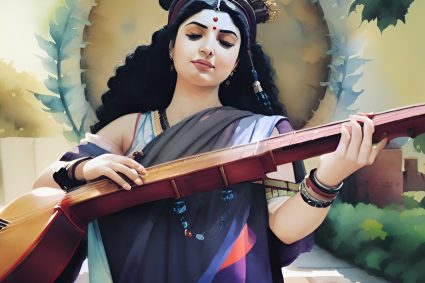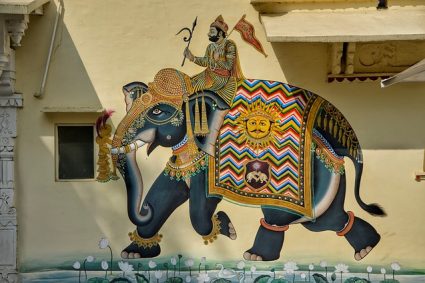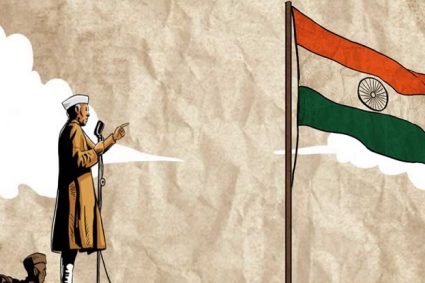
India’s rich cultural heritage is renowned worldwide for its vibrant diversity and artistic brilliance. Among its most treasured treasures are the traditional performing arts, which have been nurtured and passed down through generations for centuries. These timeless art forms encompass music, dance, theater, and storytelling, representing a tapestry of emotions, beliefs, and traditions. Rooted in history, mythology, and spirituality, India’s traditional performing arts continue to captivate audiences with their unparalleled artistry and mastery.
Written by Adyasha Parida, Harshita Singh, Khumbar Debbarma, B.FSc, 8th Sem
Music, the universal language that transcends barriers, finds its true essence in India’s classical music traditions. Divided into two main genres, Hindustani and Carnatic, Indian classical music is a complex system of ragas (melodic patterns) and talas (rhythmic cycles). The mesmerizing melodies produced by instruments like the sitar, sarod, veena, flute, and tabla, among others, weave together intricate improvisations and disciplined techniques.
Hindustani classical music, with its origins in North India, embodies a soulful and expressive style, while Carnatic music, originating in South India, is characterized by its rhythmic precision and intricate compositions. Masters of these forms, like Ravi Shankar, Zakir Hussain, M.S. Subbulakshmi, and L. Subramaniam, have elevated the status of Indian classical music to a global platform, showcasing its profound beauty to the world.
The art of Indian classical dance is equally enchanting and holds a significant place in the country’s cultural landscape. Each dance form has its unique style, repertoire, and symbolism, reflecting the diverse traditions and customs of various regions. Bharatanatyam from Tamil Nadu, Kathak from North India, Odissi from Odisha, Manipuri from Manipur, Kuchipudi from Andhra Pradesh, and Mohiniyattam from Kerala are some of the well-known classical dance forms.
Indian classical dance is a harmonious blend of expressive hand gestures (mudras), intricate footwork, graceful movements, and elaborate facial expressions that narrate tales from mythology, epics, and folklore. Through their performances, skilled dancers like Birju Maharaj, Mallika Sarabhai, Shovana Narayan, and Alarmel Valli preserve and promote the legacy of Indian dance forms, leaving audiences spellbound with their virtuosity.
Theater, another essential component of India’s traditional performing arts, has a long and illustrious history that dates back to ancient times. Classical Sanskrit dramas, such as those written by Kalidasa, Bhasa, and Shudraka, showcase the intricacies of human emotions and moral dilemmas, often interwoven with mythical and historical narratives. These plays are performed through elaborate costumes, vibrant makeup, and eloquent dialogue delivery.
The traditional theater is not confined to scripted performances alone; it also includes vibrant folk theater forms that have evolved over time in different regions. Yakshagana from Karnataka, Bhand Pather from Jammu and Kashmir, Jatra from West Bengal, and Ramlila from North India are just a few examples of the diverse folk theater forms that continue to entertain and educate audiences with their social commentary and cultural significance.
Storytelling, an ancient art form that transcends time and age, forms the foundation of India’s oral traditions. Passed down from generation to generation, stories of gods, heroes, demons, and sages have been preserved through epic poems like the Ramayana and the Mahabharata. The tradition of Kathakali, a dance-drama from Kerala, and Baul performances from Bengal are living examples of how storytelling remains a vibrant and integral part of India’s cultural heritage.
India’s traditional performing arts are not only a source of entertainment but also serve as a means of spiritual expression and self-realization. Many of these art forms, particularly in classical dance and music, require years of rigorous training under the guidance of gurus (teachers) to attain mastery. This time-honored teacher-student relationship, known as the guru-shishya parampara, is a sacred bond that fosters not just the technical prowess but also the emotional depth and philosophical understanding of the art.
Despite the challenges posed by modernization and globalization, India’s traditional performing arts have managed to retain their sanctity and significance. Government initiatives, cultural organizations, and dedicated artists have played a crucial role in preserving and promoting these art forms by organizing festivals, workshops, and educational programs. Additionally, the digital age has facilitated broader outreach, allowing traditional arts to reach a global audience and kindle interest in new generations.
In conclusion, India’s traditional performing arts epitomize the country’s cultural richness and artistic brilliance. These art forms, whether it be classical music, dance, theater, or storytelling, offer a glimpse into India’s soul, its ethos, and its collective consciousness. As they continue to inspire and engage audiences worldwide, they stand as a testament to the enduring legacy of artistry and mastery in the land of myriad wonders.



















